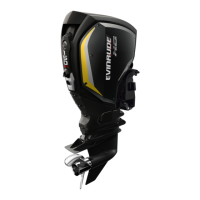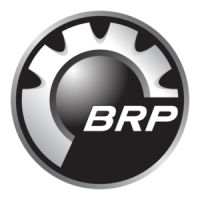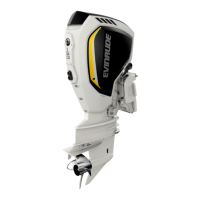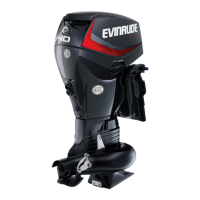39
Boat Rigging
Cable and Hose Installation
1
2
Cable and Hose
Installation
Before installation, identify all required wiring,
buss cables, hoses and control cables:
• Buss cables and hubs
• Instrument harnesses
• Battery cables and switches
• Oil tank sender harness
• Fuel supply hose
• Oil supply hose.
• Throttle and shift cables
Determine whether any additional wiring or hoses
will be needed for accessory gauges or batteries:
• Mechanical water pressure gauge hose
• Accessory battery charging
All cables, wiring, and hoses must be long enough
to provide adequate slack. Check clearances at all
possible combinations of trim angles and steering
positions.
Buss Cable, Hose and Harness
Routing
Prevent damage to buss cables, hoses, har-
nesses or other wiring. Route buss cables, hoses
and harnesses through a rigging conduit or along
a protected path from the helm to the rear of the
boat.
Mount cable and harness connections in a dry
location, away from bilge and motor well areas.
x
Route hoses through a rigging hose to the engine.
Refer to Rigging Hose on p. 40.
Control Cable Routing
If a mechanical remote control is used, route con-
trol cables from the remote control to the Univer-
sal Control Module (UCM).
Secure all cables, hoses and harnesses with
cable supports to prevent movement or damage.
Buss cables, wiring, hoses and control cables
should follow a similar path. Select the best rout-
ing for the specific application.
NOTICE
A 12 in. (304.8 mm) or longer length of rigging
hose such as P/N 770392, or P/N 770393 is
REQUIRED to prevent damage to buss cables,
hoses, harnesses or other wiring entering the
outboard rigging center.
WARNING
Improper installation and routing of outboard
controls could wear, bind, and damage com-
ponents, causing loss of control.
1. Concealed side-mount remote control
2. Cable support
3. Rigging hose
009090
1. Concealed side-mount remote control
2. UCM
3. Rigging hose
009091

